Interstellar ‘biosignature’ leaves more big life questions than clues
Humanity is a social species and the dream of alien contact may be cause for a big interplanetary party someday ... but one team of astronomers is already celebrating – so what have they found?
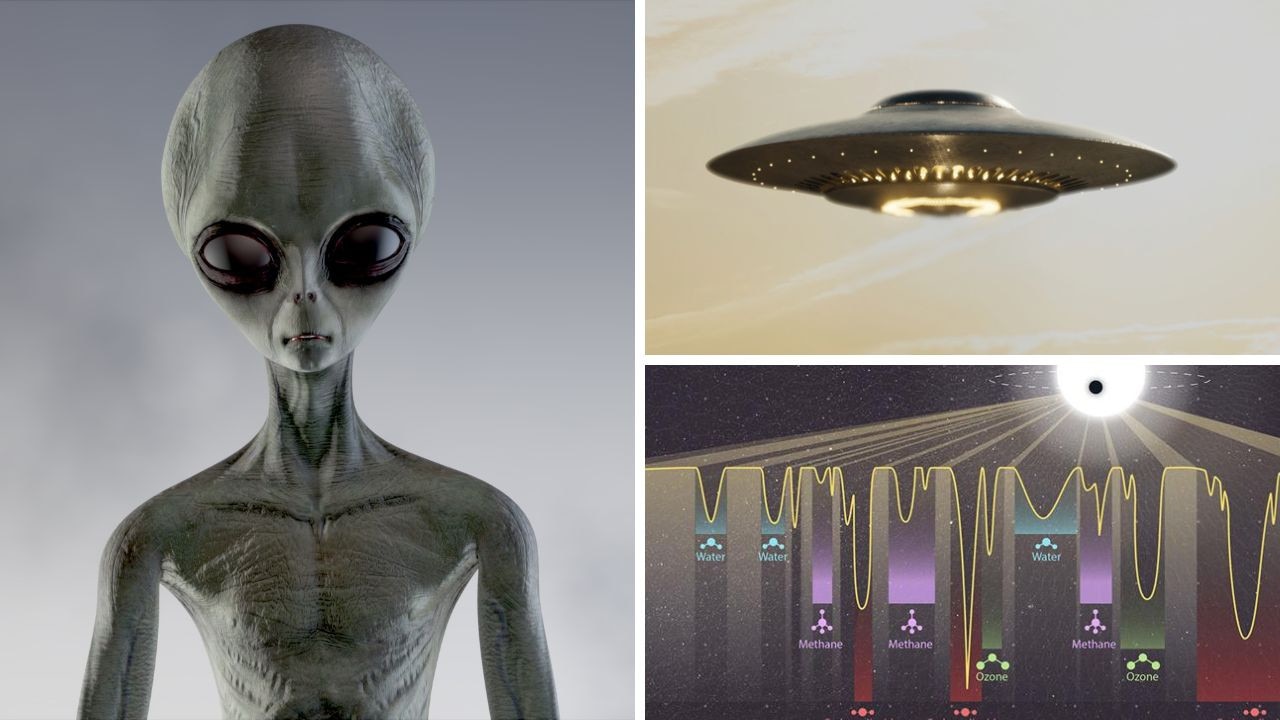
READING LEVEL: ORANGE
Have astronomers* discovered the first-ever evidence of off-world life? And was a signal isolated from interstellar* noise a sign of active biology*?
“Astronomers have detected the most promising signs yet of a possible biosignature* outside the solar system, although they remain cautious,” a Cambridge University press release states.
What has the researchers excited is the planet K2-18b.
Its existence is only known because of the shadow it casts when it passes between its star and Earth.
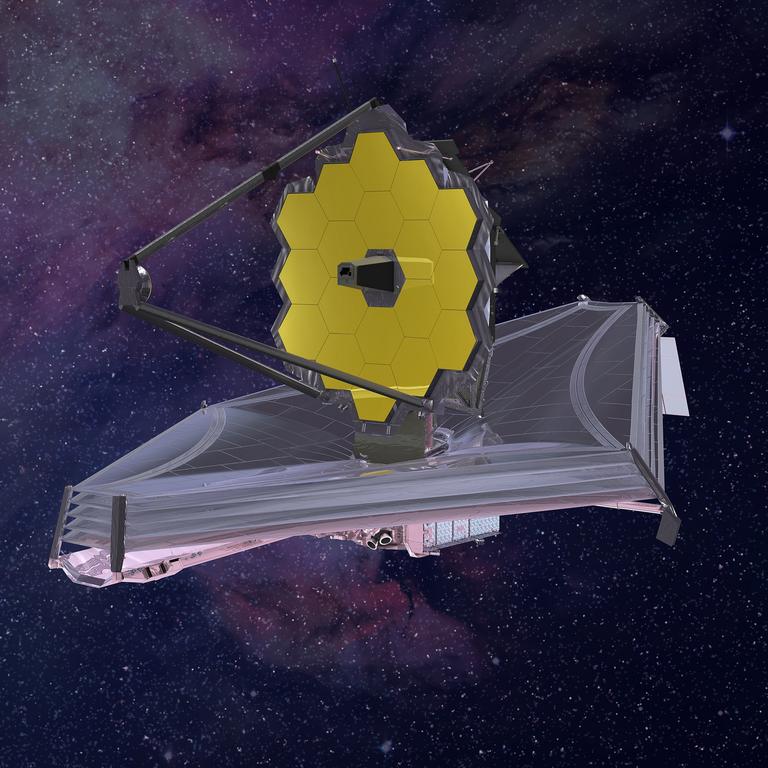
The James Webb Space Telescope has managed to capture the planet’s light spectrum and atmospheric gases like methane*, carbon dioxide, oxygen and dimethyl sulphide* also cast shadows when light strikes them.
Researchers believe they detected the presence of dimethyl sulphide, a molecule only found on Earth as the by-product of plankton* and bacterial life in our oceans. And that makes it a possible “biomarker” – a chemical trace of the potential for life on other worlds.
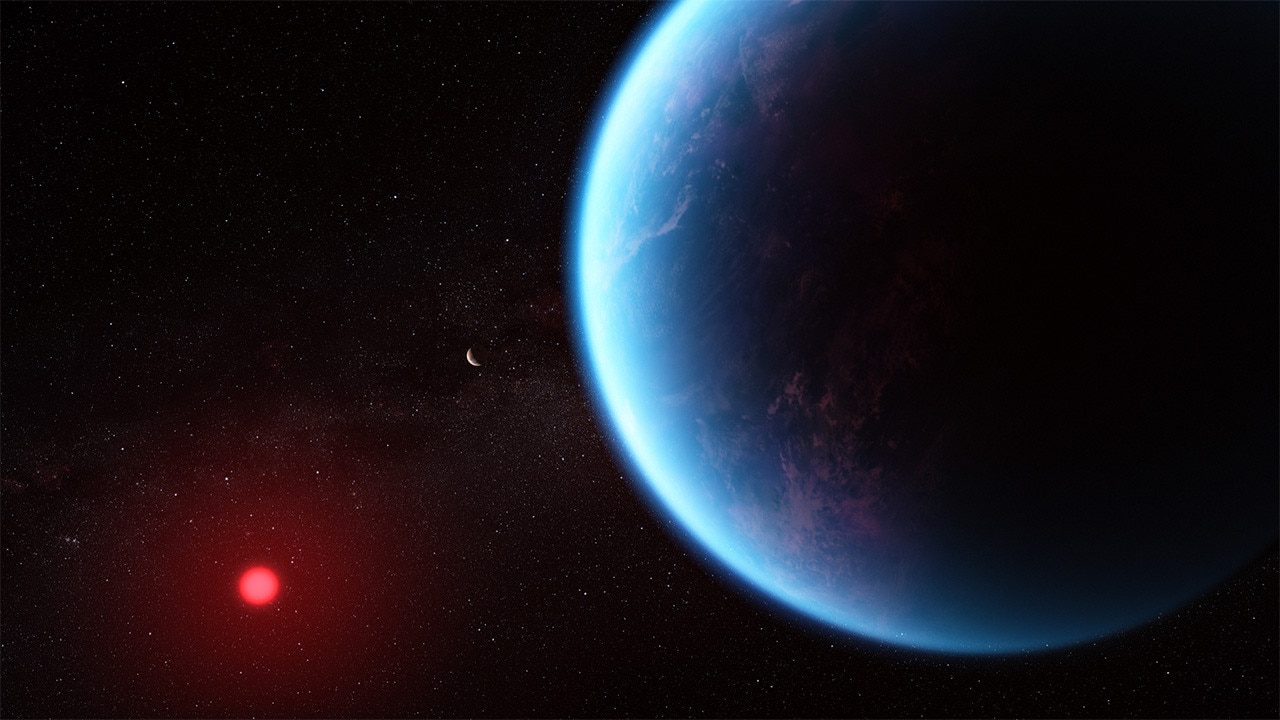
“While this discovery is intriguing, most astronomers – including the paper’s authors – aren’t ready to claim that it means extraterrestrial* life exists,” said University of Arizona distinguished professor of astronomy Chris Impey.
There simply isn’t enough available data yet.
“Searching for life beyond Earth is one of the great, profound* pursuits of humankind,” said The Planetary Society’s chief scientist, Dr Bruce Betts. “But any claim of life out there will require a thorough study by the scientific community as a whole before we have confidence in the results.”
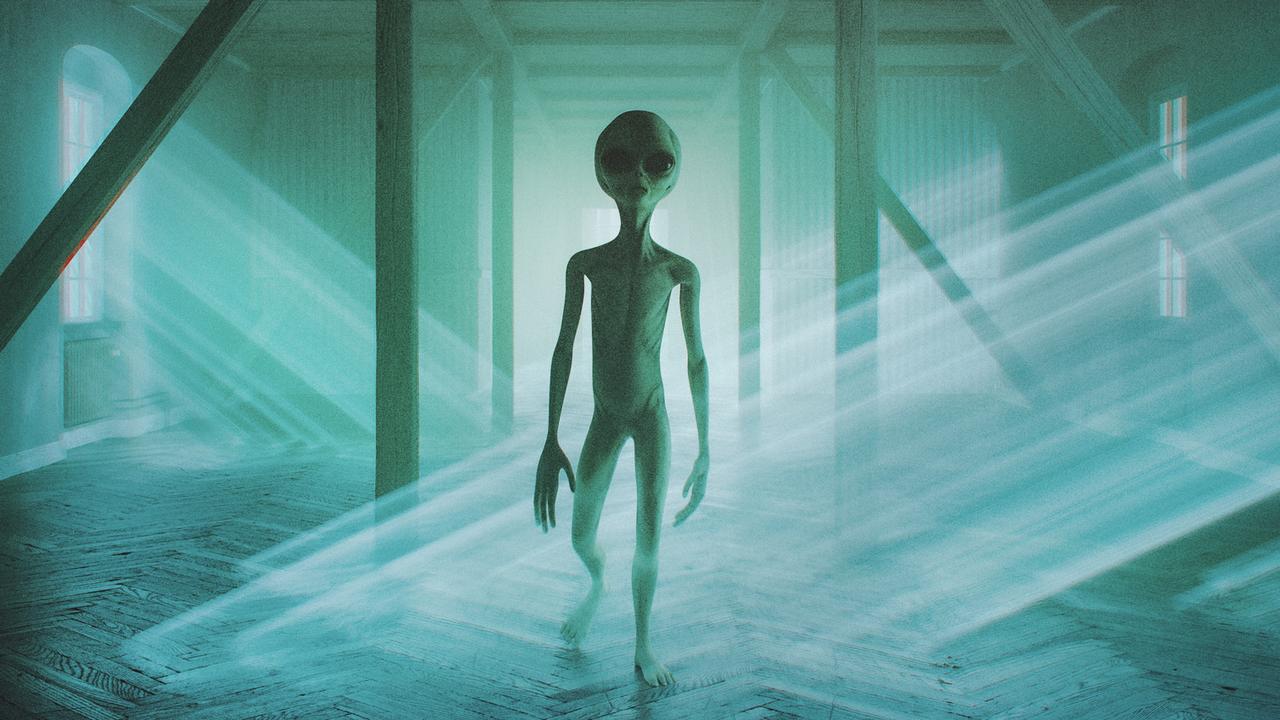
“It is in no one’s interest to claim prematurely that we have detected life,” Cambridge University astronomer and lead author of the study Professor Nikku Madhusudhan told media.
But he has called the study a “revolutionary moment”.
“It’s the first time humanity has seen potential biosignatures* on a habitable* planet,” he said.
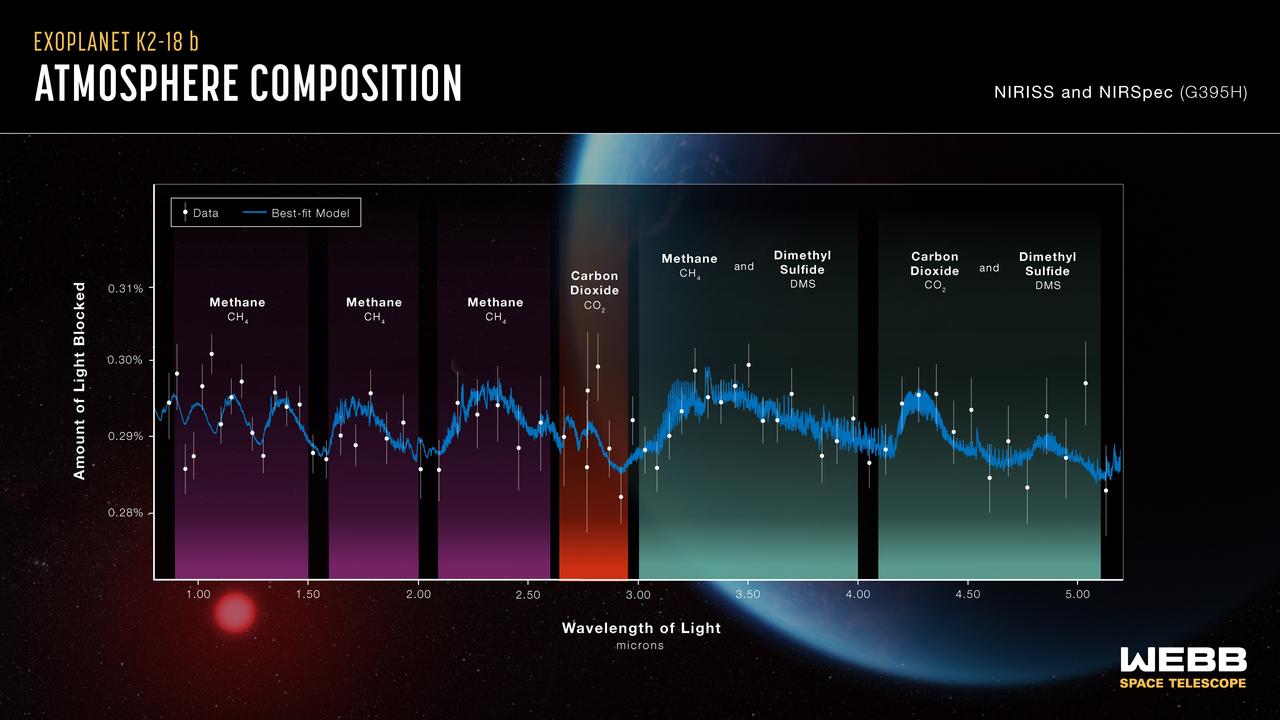
WHAT IS THIS PLACE?
Not much is known about K2-18b but it was found in 2015 by the Kepler Space Telescope.
It has a radius about 2.4 times larger than that of Earth. Its year lasts just 32.9 days and it orbits within the habitable “Goldilocks Zone” (warm enough for liquid water) of a cool red dwarf star about 120 light-years away, in the direction of the Leo constellation*.
The astronomers believe the planet may have a thin hydrogen* atmosphere over an oceanic surface – but that is yet to be confirmed.
The planet was first photographed by the Hubble Space Telescope in 2016. Astrobiologists* thought then they saw indications of water vapour. Upon revision, what they were looking at later turned out to be methane.
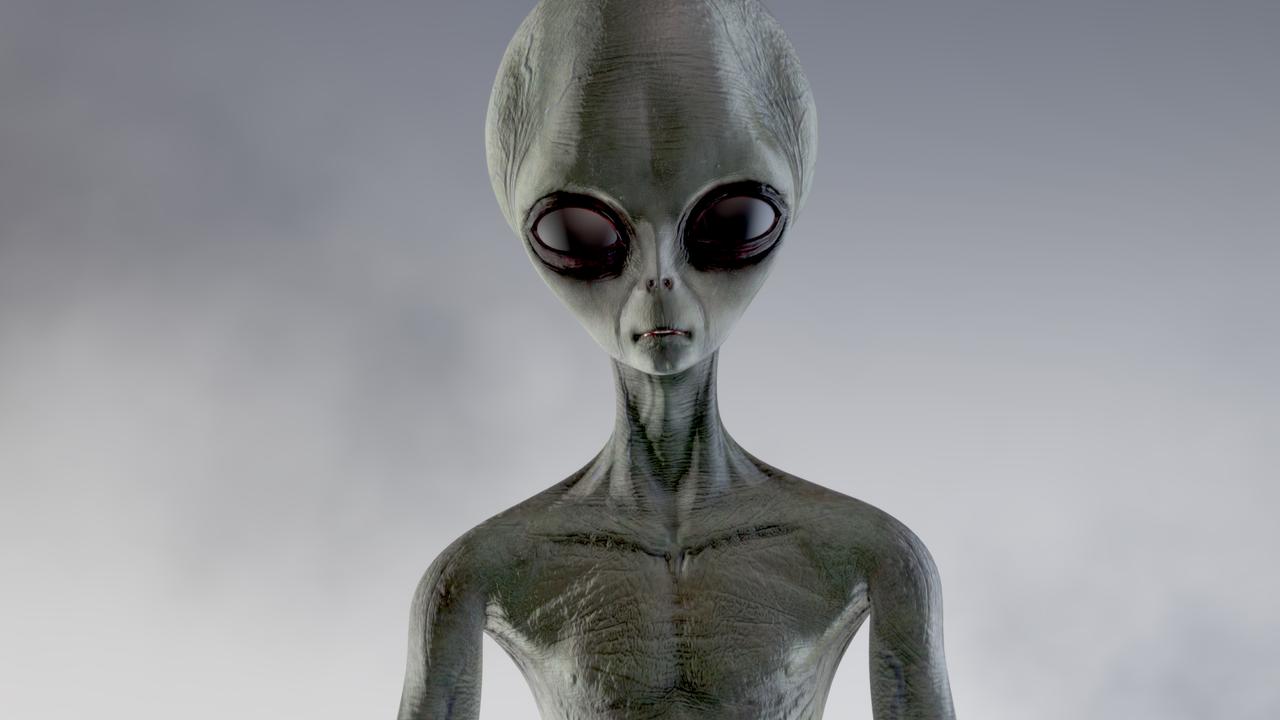
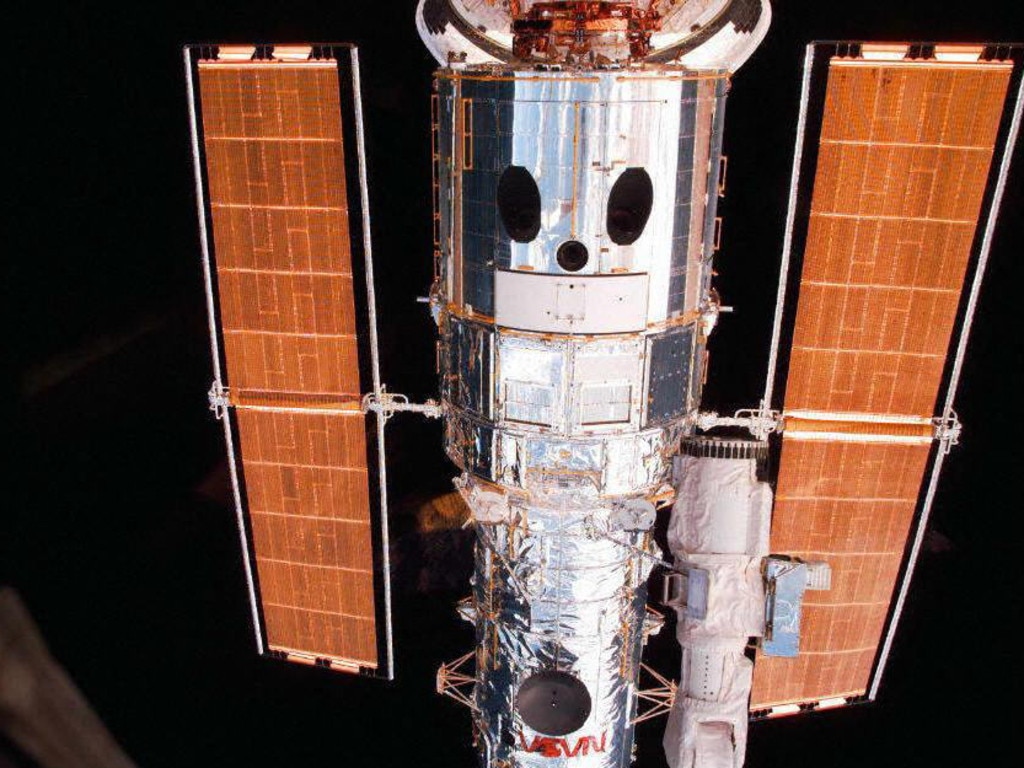
WHAT HAS CHANGED?
“We didn’t know for sure whether the signal we saw last time was due to DMS (dimethyl sulphide), but just the hint of it was exciting enough for us to have another look with JWST using a different instrument,” Professor Madhusudhan said.
“This is an independent line of evidence, using a different instrument than we did before and a different wavelength range of light, where there is no overlap with the previous observations. The signal came through strong and clear.”
But K2-18b isn’t Earth and Professor Madhusudhan conceded there could be previously unknown chemical processes at play.
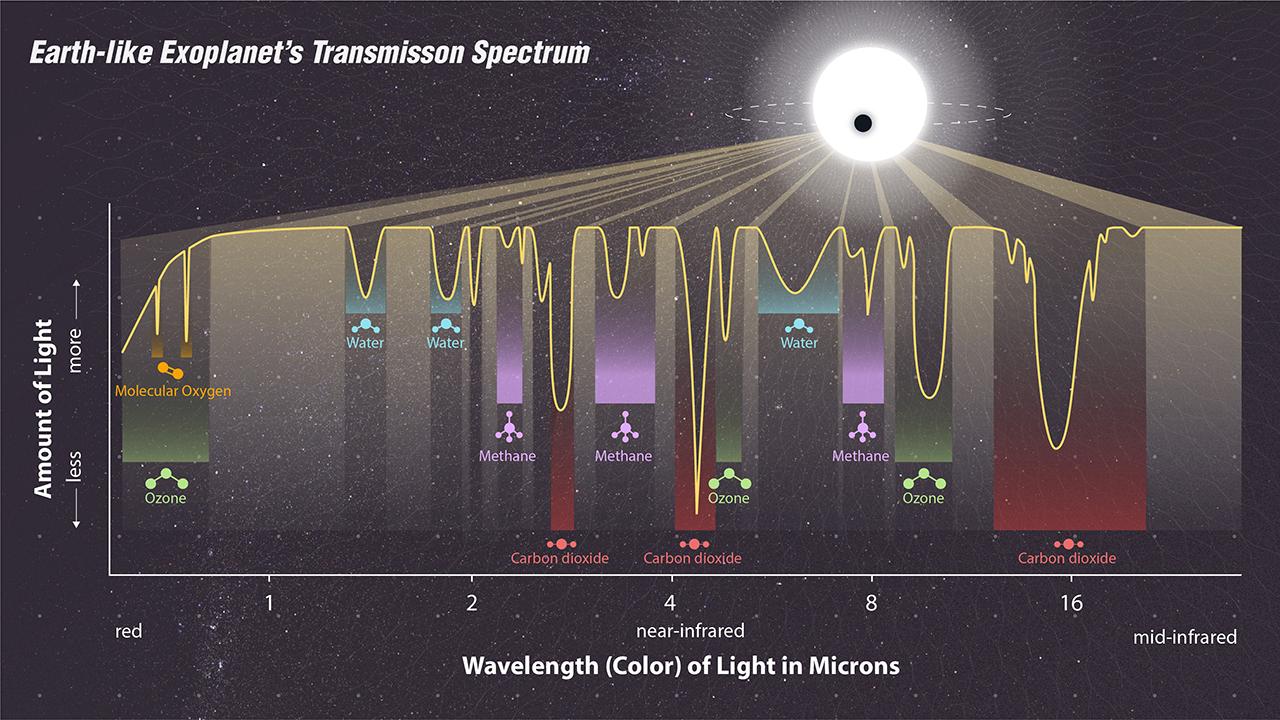
He and his team are confident in the strength of their findings.
“Decades from now, we may look back at this point in time and recognise it was when the living universe came within reach,” Professor Madhusudhan said.
“This could be the tipping point, where suddenly the fundamental question of whether we’re alone in the universe is one we’re capable of answering.”
While a statement released by the Search for Extraterrestrial Intelligence (SETI) calls the findings “intriguing”, it also says the signal was “modest, ambiguous* and potentially explainable as the result of noise or systematic error”.

“This study is not a confirmation of life; not even a hypothesis* that life is present on K2-18b, but a demonstration of where our methodological* strengths and limitations lie, and what must come next to an unambiguous claim of life beyond Earth,” the SETI statement concludes.
In other words, much more painstaking scientific research is needed. Only then will humanity have a chance of discovering the full story of the universe.
POLL
GLOSSARY
- astronomers: scientists who study the stars, planets and other natural objects in space
- interstellar: existing or occurring between the stars, the space between stars, travelling among the stars
- biology: the scientific study of the natural processes of living thing
- methane: a gas with no smell or colour, often used as a fuel and the main constituent of natural gas
- dimethyl sulphide: a methyl sulphide in which the sulphur atom is substituted by two methyl groups, it is produced naturally by some marine algae
- plankton: very small organisms that float in water
- extraterrestrial: beyond Earth, outside our planet and its atmosphere
- profound: felt or experienced very deeply, something very important but difficult to grasp or explain
- biosignature: according to NASA, it is any characteristic, element, molecule, substance or feature that can be used as evidence for past or present life, it also needs to be something that can’t be made without the presence of life
- habitable: able to be lived in or capable of supporting life in some form
- constellation: any group of stars that looks like a particular shape in the sky and has been given a name
- hydrogen: chemical element that is the lightest gas, has no colour, taste, or smell, and combines with oxygen to form water
- astrobiologists: scientists who study the origin, evolution and distribution of life in the universe
- ambiguous: uncertain, doubtful, having or expressing more than one possible meaning, sometimes intentionally
- hypothesis: idea or explanation for something that is based on known facts but has not yet been proved
- methodological: relating to the method used for doing, teaching, or studying something
EXTRA READING
Are we living in a giant black hole?
NASA blasts off to Jupiter’s moon
Webb telescope on asteroid’s tail
QUICK QUIZ
- When and how was planet K2-18b found?
- How long is year on K2-18b?
- K2-18b’s radius is how many times larger than Earth’s?
- How many light-years away is K2-18b?
- What does the “Goldilocks Zone” refer to?
LISTEN TO THIS STORY
CLASSROOM ACTIVITIES
1. Life elsewhere?
In the coming years when more scientific research is done, and possibly other life is found outside of Earth, what would you want to know and what would you tell them about life on Earth?
Write a letter to a possible something or someone living on another planet, telling them about life on Earth and things you think they should know about us.
Then ask them the questions you’d like answered about their existence and home.
Time: allow 20 minutes to complete this activity
Curriculum Links: English, Science, Personal and Social, Critical and Creative Thinking
2. Extension
Draw a diagram and list all the facts we know about this planet K2-18b.
Time: allow 10 minutes to complete this activity
Curriculum Links: English, Science, Personal and Social, Critical and Creative Thinking
VCOP ACTIVITY
BAB it!
Show you have read and understood the article by writing three sentences using the connectives “because’’, “and”, and “but” (BAB). Your sentences can share different facts or opinions, or the same ones but written about in different ways.


